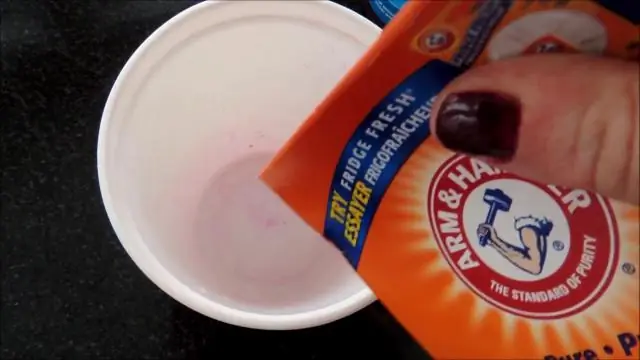
Table of contents:
- Author Bailey Albertson [email protected].
- Public 2023-12-17 12:53.
- Last modified 2025-06-01 07:32.
How to bleach linen at home

We often deny ourselves the purchase of a white thing. It smears quickly, it is difficult or impossible to remove stains, you need to wash separately from other things - common arguments against white. But is it so difficult to bring things back to a snow-white color? Here are some tips on how to bleach your laundry at home.
Content
- 1 Whiten or not?
- 2 Preparing for washing
-
3 How to whiten things at home: traditional methods
- 3.1 Chlorine bleaches
- 3.2 Oxygen bleaches
- 3.3 Optical brighteners
-
4 Folk methods of bleaching
- 4.1 Hydrogen peroxide
-
4.2 Boiling
4.2.1 Boiling laundry video
- 4.3 Vegetable oil and mustard
- 4.4 Boric acid
- 4.5 Soda
- 4.6 Potassium permanganate
- 4.7 Citric acid
- 4.8 Aspirin
- 4.9 Turpentine
- 4.10 Blueprint
- 5 Whitening in a washing machine
- 6 Whitening in dry cleaning
-
7 Features of bleaching different items of clothing and linen
- 7.1 Whitening underwear
- 7.2 Whitening painted items
- 7.3 Bleaching polyester garments
- 7.4 Bleaching colored items
- 7.5 How to change the color of clothes by bleaching
- 7.6 Reviews
Whiten or not?
Spots on white things will upset any hostess. After all, your husband's favorite blouse or shirt can be hopelessly ruined! The question arises: how to save a thing without harming it? You can, of course, contact a specialist by having the laundry dry cleaned. But it is not always possible to do this. Then you just need to choose the right product and method of whitening, since there are not so few of them.
Preparing for washing
To ensure that the laundry will turn white and all the stains have come off the fabric, you need to prepare the clothes for washing. It is better to do this after soaking them. Pour warm water into a wide basin, add washing powder, bleach (if the fabric allows) and place the laundry. Leave the clothes to soak for 4-5 hours, then go to wash.
If you plan to use a certain bleach product, take the time to test its effect on an inconspicuous area or a separate piece of the same fabric so as not to ruin the laundry.
How to whiten things at home: traditional methods
In the arsenal of every housewife, there is probably such a household chemical item as bleach. There are different bleaches, so read the instructions carefully. Let's list the most popular and common remedies for removing stains from white things.
Chlorine bleaches
The most popular brands are "Whiteness", "Ace".
The main component of "Whiteness" is active chlorine. It is he who removes stains and whitens the material. In addition to chlorine, the composition of "Whiteness" may include surfactants, which enhance the effect of the agent. With the help of "Whiteness" you can bleach only cotton and linen items. Silk, wool, synthetics will not tolerate washing with "Whiteness". And before bleaching cotton and linen fabrics, you should carefully read the instructions and observe the exact dosage. Otherwise, things will quickly wear out and become unusable.

Whiteness perfectly bleaches dense fabrics
Use "Whiteness" depending on how you plan to see the result after washing. If you want to keep white or update it, get rid of yellowness, do the following:
- In 10 liters of cool water, dilute 2 tbsp. l. Whiteness.
- Soak the laundry for 20 minutes. Soak the laundry for 1 hour if you want to remove the yellowness and restore the original color.
- Rinse the laundry thoroughly.
- Do a wash.
If you want to remove a stain from thick fabric, such as a bedspread:
- Apply "Whiteness" to the stain.
- Hold for one minute.
- Soak the item with detergent for 4-5 hours.
- Rinse.
- Do a wash.
By the way, "Whiteness" retains its detergent properties for six months and cannot be stored in the cold. Use an opened bottle within 6 months and store in a dark, warm place.
Oxygen bleaches
Oxygen bleaches are less aggressive than chlorine bleaches. The active ingredients in their composition are hydrogen peroxide and sodium percarbonate. Also surfactants, conditioner can be added to the bleach. Therefore, as a rule, oxygen bleach is available in liquid form. But there are also powdered products. Oxygen bleach brands:
- Shabondama;
- Eco2;
- Vanish;
- Persol Extra;
- Ace Oxi;
- Clax Sonril conc 40A1;
- Ecover;
- BOS Plus and others.
Oxygen bleach can be used for hand wash and machine wash. This type of bleach is suitable for both white and colored laundry.
If you wash in a machine, put oxygen bleach and detergent into the dispenser. Calculate the portion according to the instructions.
For hand wash we recommend soaking with bleach. See the instructions for the product for the soaking time.
Optical brighteners
Optical brighteners are not represented by any separate means. They are part of washing powders and stain removers. Their principle of action is tinting. That is, the spots do not disappear anywhere, but are simply painted over with fluorescent paints.
When choosing bleach, carefully read the instructions, which should indicate the types of fabrics for which they are intended. Remember that chlorine bleach should not be used on delicate fabrics.
Traditional methods of whitening
It so happens that there is no traditional bleach in the house. Then you can turn to non-traditional methods of whitening. Some of the products were also used by our grandmothers, others are identical to industrial ones, just cooked at home.
Hydrogen peroxide
Remember, hydrogen peroxide is part of oxygen bleaching agents. Therefore, you can entrust her with your things. Hydrogen peroxide can be used to bleach cotton, linen and synthetic fabrics:

Hydrogen peroxide will bleach your laundry
- Add hydrogen peroxide to the washing powder while washing in the machine (10 ml per 25 liters of washing powder or gel for five minutes at a temperature of 70-80 degrees). If conditions cannot be met, wash by hand.
- To whiten your underwear, mix three tablespoons of 3% peroxide in 12 liters of hot water. Soak clean laundry in the solution for one hour, then rinse and dry as usual.
- To bleach woolen and silk items, it is necessary to prepare a solution: for 12 liters of warm water 250 gr. salt, 30 gr. washing powder and 1 liter of hydrogen peroxide. Soak things for 3-4 hours, and then rinse well.
- For washed things, the following method is suitable: rub the thing with laundry soap and put it in hot water. Add hydrogen peroxide to the water at the rate of 40 ml per 5 liters of water. Bleach in this way for 3 hours, and then rinse the laundry.
- To return the original whiteness to gray tulle, add 1 tbsp. l. ammonia and 2 tbsp. l. peroxide. Soak for 5 minutes, then rinse in cold water. You can boil bed linen in a similar solution. (35 grams of ammonia and 35 grams of peroxide are added to an aluminum or enamel bowl with water, boiled for 40 minutes).
- In combination with lemon juice, peroxide removes yellow stains on synthetics. The juice of one lemon is mixed with 1 tsp. peroxide and applied to spots, rinsed after 30 minutes.
Boiling
An old grandmother's method is boiling. The method is really effective if done correctly. Only cotton and linen items can be boiled. For boiling, a zinc or enamel container is suitable, on the bottom of which a white cloth is placed. Powder or soap dissolves well in water, and the stains are lathered. The laundry must be covered with water. To enhance the effect, you can add a tablespoon of ammonia. It should be boiled for at least 30 minutes. It all depends on the degree of pollution of things. In the process, it is better to stir the laundry with a wooden stick.
Instead of boiling powder, you can use a mixture of grated laundry soap and soda ash (lye) in a 1: 1 ratio. Another solution is to mix one teaspoon of bleach with a liter of water, stand, add a clear solution to the water for boiling. But this product can damage the fabric, be careful!
Boiling laundry video
Vegetable oil and mustard
Kitchen towels are often very dirty. For them, experienced housewives suggest using such a tool:
- 2.5 large spoons of vegetable oil;
- 1 large spoonful of bleach (usually dry);
- half a glass of washing powder;
- 5 liters of water (not boiling water, but hot).
Soak the towels for 2-3 hours and then wash as usual.
Another way to bleach kitchen towels is to soak them in mustard water. To do this, add mustard powder to boiling water. As it cools, the water will settle, and put towels in it, having previously filtered the water. For 3 liters of water you need 3 tbsp. l. mustard powder.

Vegetable oil is also useful for soaking towels.
Boric acid
For white socks, golf, T-shirts, a boric acid solution is perfect: 2 tbsp. l. for 4 liters of water. Soak things in the solution for 2 hours, then wash. It also helps to fight fungal diseases.

Boric acid not only cleans, but also disinfects the laundry
Soda
Baking soda will also help whiten your laundry without harming the fabric. Even baby clothes can be bleached with soda. To do this, you need to soak them for several hours in water with the addition of soda (one third of a glass for 10 liters).
To enhance the effect of soda will help ammonia: 5 tbsp. l. alcohol, 10 tbsp. l. soda for 10 liters of warm water. Soak laundry for three hours and wash.

Soda whitens things gently
Potassium permanganate
For bleaching, you can use potassium permanganate, or simply potassium permanganate. To do this, dissolve 100 gr in five liters of hot water. washing powder and 2-3 crystals of potassium permanganate. Dilute potassium permanganate with water until it is pink. Soak your laundry overnight. Rinse in the morning.
Washing powder can be replaced with 100 grams of grated laundry soap.

Potassium permanganate will refresh the appearance of linen
Lemon acid
The principle of whitening with citric acid is similar to the others: add 2-3 tbsp. l. citric acid in 5 liters of hot water, add 100 gr. washing powder or laundry soap and soak the laundry in the resulting mixture for 2-3 hours. Then rinse the laundry.

Citric acid fights stains on white linen
Aspirin
Acetylsalicylic acid (aspirin) can help remove yellow spots from sweat on white shirts or T-shirts. To do this, dissolve two tablets in a half glass of warm water and fill the stains with the solution for two hours. Then wash as usual.

A solution of aspirin tablets can help remove yellow spots
Turpentine
Turpentine can be used to bleach cotton items. For 5 liters of warm water, add 5 tbsp. l. turpentine and soak the laundry for three hours. Then wash.

Turpentine can be used to bleach cotton items
Blue
Bleaching using blue has been carried out for a long time. But even now the method has not lost its relevance. Dilute the blue in water to a pale blue color and rinse gray items in it. Blue has a tinting effect.

Blue is one of the oldest folk remedies for whitening
You may not have even realized how many whitening products you have in your arsenal! Just remember that some products need to be used with caution so as not to harm not only the tissue, but also your health. For example, in no case should you inhale ammonia vapors while boiling.
Whitening in a washing machine
The above products are usually used for hand washing. But if there is no time for this? Of course, you can also bleach things in the washing machine. This can be done primarily with traditional oxygen bleaching agents. They are poured into the bleach dispenser. If there is none in the machine, then it is better to select the "Pre-wash" mode and pour bleach into the powder compartment, and the powder into the pre-wash compartment. Pour in liquid bleach a short time after the start of washing, when the powder has already been washed off.
It turns out that a remedy like Domestos can also participate in whitening. It is poured into a powder dispenser according to the instructions.
To enhance the powder effect during washing, you can add 2-3 drops of dishwashing detergent.
You can also add baking soda to the powder in the dispenser. It will not only soften the water, but also enhance the whitening effect.
Dry cleaning whitening
If it is impossible to cope with stains on white things on your own, or you just do not want to risk your favorite thing, then contact a professional dry-cleaner. Pay attention to the labels before you dry clean your items. It indicates whether the item can be dry-cleaned. Check in immediately after use to prevent stains from getting old.
Features of bleaching different items of clothing and linen
When choosing a whitening method, consider what kind of thing you are going to whiten.
Whitening underwear
It is better to wash underwear, especially lace, in warm water by hand to prevent a washed gray look. If you still need to bleach your underwear, then hydrogen peroxide is the best remedy. For whitening, add 5 tbsp. l. peroxide in 2 liters of water, dip the laundry in this solution for half an hour, then rinse.
Whitening painted things
It happens that, together with a white thing, a colored one gets into the drum of the machine. The white thing takes on a shade or even gets colored. In this case, you can resort to a special tool "Antilin", which will correct the error. But folk remedies should not be neglected either. You can whiten painted things by boiling in a peroxide solution: 2 tbsp. l. for 4 liters of water.
Such a mixture can also help out: starch, citric acid, salt, laundry soap in equal proportions. Apply the resulting paste to the stains from the inside for 12 hours. After the time has passed, rinse the items.
Bleaching polyester garments
Synthetic items - underwear, blouses, tulle can also be bleached at home. But it is important to remember that they cannot be bleached at high temperatures, chlorine bleach cannot be used and dried in the sun.
You can whiten polyester clothes with salt: pour 600 g of water into 10 liters of water. salt and soak the laundry in the solution. Rinse after two hours.
You can also use ammonia with soda: for 10 liters of water 2 tbsp. l. ammonia and 10 tbsp. l. soda. Soak for three hours or more. Be sure to wash after soaking.
Whitening colored items
If you have white clothes with a color pattern, then the issue of whitening seems even more complicated. After all, whitening the whole thing can damage the print. In fact, there is a way out of such situations.
First of all, you need to remove stains from the white areas of the fabric. This can be done with stain removers. For example, Vanish or laundry soap. And then wash the item as usual.
If it's not about stains, but about the fact that the laundry has become gray, it has become washed, try the following method:
- combine 2 tbsp. l. hydrogen peroxide, 2 tbsp. l. ammonia and 4 tbsp. l. soda;
- add the mixture to the powder when washing;
- wash your clothes as usual.
This product can be used in both hand and machine wash. Soda and peroxide will not damage the colored areas, but only give them brightness, and whiten whites. Ammonia will enhance the effect.
How to change the color of clothes with bleaching
Reviews
In order not to be unfounded, here are a few reviews of various bleaching methods.
So, use traditional or folk methods to whiten your laundry. Always consider the composition of the fabric to be bleached and take precautions.
Recommended:
How To Bleach The Soles Of Sneakers, Clean Them On Sneakers Or Other Shoes, Wash Them To White Using Various Methods + Photos And Videos
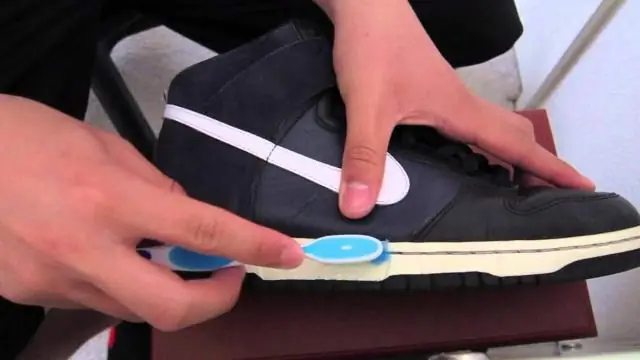
Shoes with white soles (sneakers, sneakers, etc.) - how to clean them quickly and easily. How to preserve the result after cleaning and protect it from dirt
How To Clean The Hood In The Kitchen From Fat, As Well As The Mesh And Its Other Parts, Using Various Methods And Means

We clean the hood in the kitchen and its other parts from grease and dirt: what tools and methods to use, especially for different materials, what is prohibited
How To Remove Iodine From Clothes And Other Surfaces, Than To Wash It From The Skin, Various Methods And Means + Video And Photo
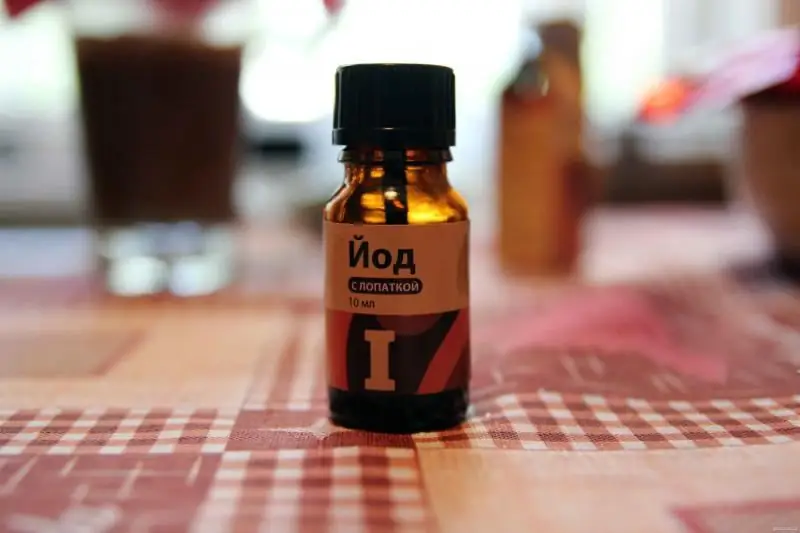
How to remove iodine from different fabrics, wash stains from furniture, body and other surfaces. Effective ways with instructions for use with photos and videos
How To Whiten A Bathtub At Home, Clean It To White From Yellow Plaque, Cleanse Stubborn Dirt With Vinegar, Soda, And Other Means
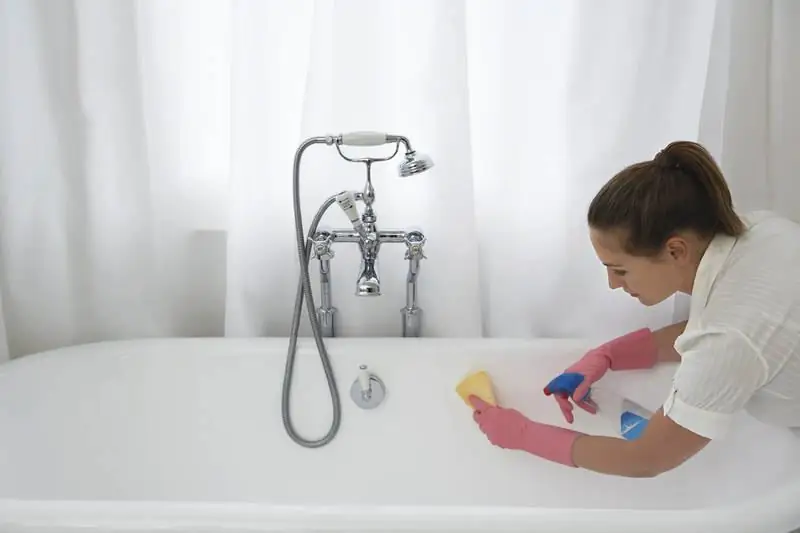
Effective methods of cleaning and bleaching cast iron, enamel and acrylic bathtubs. Using household chemicals and folk remedies
How To Make A Do-it-yourself Dishwashing Detergent Using Soda, Hydrogen Peroxide, Laundry Soap, Mustard Powder
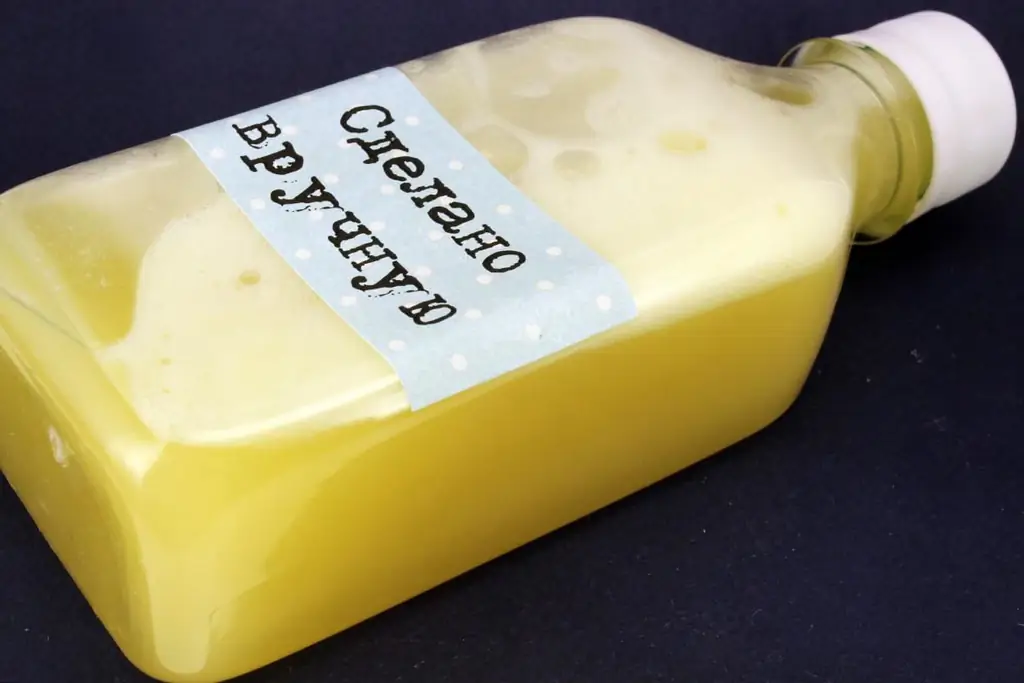
How to replace purchased dishwashing detergents, the pros and cons of household and chemical products. Crafting recipes using simple ingredients
